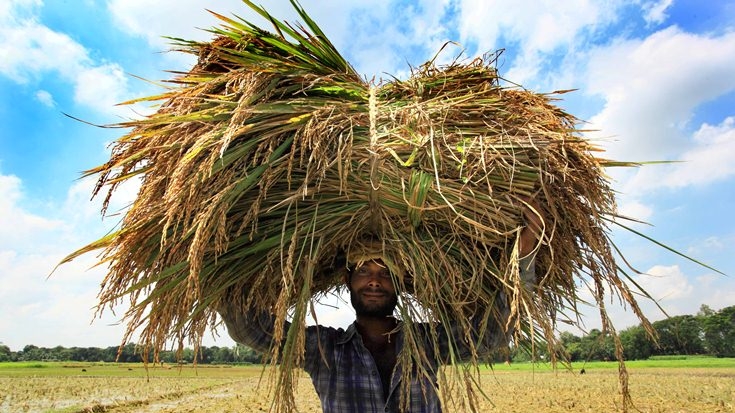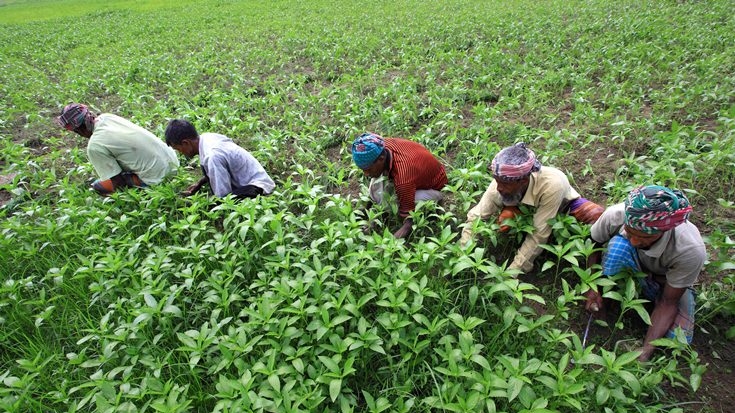Bangladesh has come a long way since the early 1970s, when attaining food security was a distant dream. Now, the country is able to feed its own population. Pockets of extreme poverty still persist though, especially in areas with unfavorable agricultural environments. The Bangladesh Integrated Agricultural Productivity Project (IAPP) aims to enhance the productivity of agriculture, including livestock and fisheries, in pilot areas, which are particularly prone to adverse seasonal weather conditions such as droughts and flash floods.
Challenge
Agriculture provides livelihoods for over 60% of the population of Bangladesh. However, people living in the flash flood and drought prone districts in the northwest and the saline affected tidal surge areas in the south struggle to produce enough food to eat or earn a decent living.
Development indicators show that these regions suffer from higher poverty than the national average. The latest Household Income and Expenditure Survey (HIES, 2008) indicates that poverty rate in the northwest is 57% and in the south is 52% against the national average of 40%.
The link between unfavorable agricultural environments, where farmers lack technology, and chronic poverty coupled with food insecurity is abundantly clear in these areas.
Approach
IAPP aims to use technology and training to enhance agricultural production in the flash-flood and drought prone northern districts of Rangpur, Kurigram, Nilfamari, and Lalmonirhat and saline-affected tidal surge areas in the southern districts of Barisal, Patuakhali, Barguna and Jhalokhati. IAPP is expected to benefit about 175,000 crop farmers, 60,000 livestock farmers and 60,000 fish farmers in the selected districts. The intervention is expected to increase rice production from 2,200 kg/ha to 2,700 kg/ha, increase fish harvest from 2,700 kg/ha to 3,400 kg/ha, and increase the yield of milk from 1 liter/cow/day to 2 liters/cow/day.
The project focuses on alleviating poverty and increasing food security through intensification of major crops such as cereals, diversification of high value non-cereal crops such as fruit and vegetables, and development of non-crop agriculture such as fishery, poultry and livestock.
Livelihood field schools improve farmers’ understanding and skills base as well as demonstrate the use of new technologies for those wishing to adapt current technology or adopt new technology to intensify and diversify agricultural yield. IAPP also aims to release new and improved crop varieties and more productive fish species. Finally, by conserving and utilizing surface water, and improving the availability and efficient use of irrigation water, farmers will be able to increase cropping intensity.
Results in Numbers
- 4,990 Livelihood Field Schools formed by the Department of Agriculture Extension of Government of Bangladesh.
- More than 19,000 demonstrations on various crops and improved technologies for the farmers were conducted.
- 1,328 fish farmer groups formed by the Department of Fisheries.
- 3,895 demonstrations on improved fish varieties and production technologies conducted.
- 128,000 farmers adopted improved agricultural technologies, including for fisheries and livestock.
- 5,378 hectares are under improved irrigation.
- 3 improved varieties of crop introduced (2 Wheat and 1 Mustard) and 6 improved production packages released for crops.
- 2 improved varieties of rice introduced and 3 improved production packages released for rice.
- 3 improved generation and 3 improved production packages for Koi, Tilapia and Pangas fish introduced.
- 400 tons of certified seeds of different crops distributed to farmers.
- 180,000 farmers trained.


